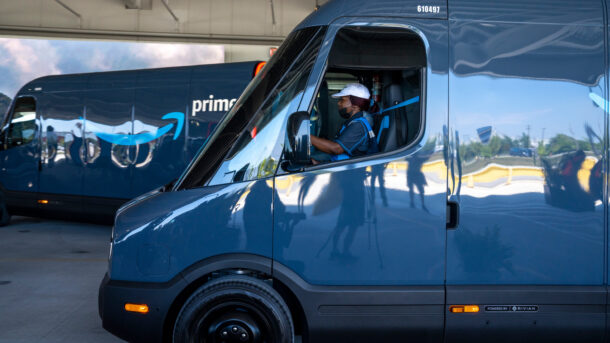As the effects of climate change become more apparent, humanity faces growing pressure to use more renewable and eco-friendly energy sources. The electric vehicle is one step in the right direction, as millions of people worldwide now own an EV. This new technology is also making its way into our business operations in the form of electric service vans.
Could electric vans be the service machines of the future? What obstacles might arise from implementing them into the workforce? Here’s everything you need to know about the future of electric service vehicles.

The Growth of Electric Service Vehicles
EV development has taken some big steps in recent years. A group of major companies – including Amazon and AT&T – established the Corporate Electric Vehicle Alliance (CEVA) in 2020, which marked a significant step in moving the economy towards renewable energy sources.
The alliance sent a clear message that electric vehicles are here to stay. It increased the demand for EVs and put greater pressure on auto manufacturers to ramp up production. Many big-name brands have released numerous electric models to meet the growing demand. We have also seen startup EV companies like Rivian gain relevance.
Contractors, engineers, maintenance professionals, and other occupations that rely on gas-powered vehicles should prepare to make the switch. If the CEVA alliance and increased EV production weren’t enough incentive, customers might also expect you to switch. They’re more environmentally aware than ever and have higher buying standards. EVs would help you build a positive brand image for this new wave of consumers.
Though it may seem intimidating now, transitioning to electric could bring your vehicle-reliant organizations to new heights. Businesses constantly look for new methods to make their operations more efficient, and electric vehicles improve efficiency in several ways:
- Charging costs less than refueling.
- Electric motor maintenance is less expensive and time-consuming.
- EVs are lighter than traditional vans and have better acceleration.
- They do not emit pollutants.
These benefits make switching to electric service vehicles seem like a no-brainer, but things aren’t as black and white as they appear. We have to overcome some serious obstacles to successfully bring fleets of EVs onto the roads.
Roadblocks Lie Ahead
While EVs have undeniable advantages over gas-powered vehicles, our infrastructure does not have the space or stability to handle widespread EV implementation. These are the primary issues with our current situation:
- Charging Stations: We would have to build thousands of charging stations to keep up with an influx of EVs, but the cost of installation and maintenance is a significant investment. Additionally, there are few logical locations for these stations that allow drivers to charge their vehicles without disturbing their schedules or privacy.
- Power Grid Workload: Our current power grid cannot sustain increased EV adoption in the long term. We would have to invest in a larger grid infrastructure or risk overloads and power outages.
- Grid Emissions: Although EVs themselves don’t cause pollution, grey electricity grids rely on fossil fuels. The more we use EVs, the more emissions we indirectly cause. We must find a way to decarbonize the grids.
With these issues in mind, skeptics wonder if the transition to electric is even worth the hassle. However, advances in Internet of Things (IoT) technology and artificial intelligence (AI) could introduce smarter methods of charging, grid load management, and battery maintenance in due time.
The success of electric vehicles depends on continuous progress in AI and IoT. Our infrastructure alone cannot withstand a massive influx of electric vehicles. Implementation remains a slow work in progress for now. Although millions of EVs have made it onto the road, companies are still holding off on rolling out EV fleets.
Progress Is Slow, but Remain Vigilant
Electric vehicles could play a major role in a greener future, but they also threaten our infrastructure’s stability. Even with these looming obstacles, corporations seem intent on making the switch. You should stay alert for sudden advancements, no matter how slow things appear right now.
Prepare yourself by researching the various electric service vehicle models and outlining how you would integrate them into your business operations.




Join the conversation: